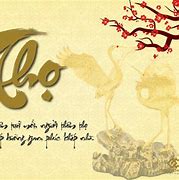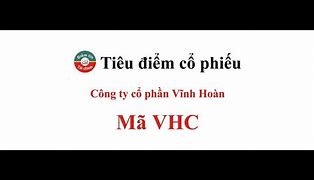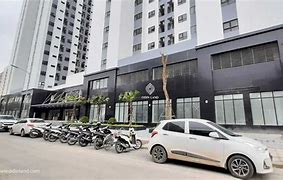
Kho Chuyển Tiếp Thừa Thiên Huế Ở Đâu
Trung tâm Xúc tiến Đầu tư, Thương mại và Hỗ trợ doanh nghiệp tỉnh Thừa Thiên Huế
Trung tâm Xúc tiến Đầu tư, Thương mại và Hỗ trợ doanh nghiệp tỉnh Thừa Thiên Huế
Tìm gia sư theo các tiêu chí: Gia sư Tiếng Anh giao tiếp, Gia sư Huế, Gia sư Thừa Thiên Huế
Là Giáo viên khoa Ngôn Ngữ Anh trường Trường Đại Học Sài Gòn
Sống tại 188 Mai Thúc Loan, Phường Đông Ba, TP Huế, Đông Ba - TP. Huế - Thừa Thiên Huế
Có nhiều năm kinh nghiệm giảng dạy, rất nhiệt tình và tận tâm trong công việc. . Chuyên dạy Starters, Movers, Flyers, grammar,tiếng Anh thiếu nhi và học sinh cấp 1: online + offline. Nhận dạy tiếng Việt online+offline cho người nước ngoài.Và dạy Tiếng Anh giao tiếp dành cho người lớn,người chuẩn bị đi định cư ở nước ngoài , dạy tiếng Anh cho nhân viên văn phòng : Tiếng Anh Thương Mại : online+ offline
Là Giáo viên khoa Sư Phạm Tiếng Anh trường THPT LÊ QUÝ ĐÔN
Sống tại ---Quận/Huyện--- - TP. Huế - Thừa Thiên Huế
Tôi tốt nghiệp trường Đại học Sư Phạm Thành Phố Hồ Chí Minh một trong 2 ngôi trường tốt nhất về ngành giáo dục. Là sinh viên khoa Sư Phạm Anh, năm 2017 với thành tích 26,5 điểm tổng ba môn toán, ngữ văn, tiếng anh( không nhân đôi). Là giáo viên với 4 năm kinh nghiệm trong việc giảng dạy tại các trung tâm lớn nhỏ và gia sư tại nhà khối học sinh THCS và THPT. ôn luyện cho học sinh thi đại học với điểm số 7.5-9.0 môn tiếng anh và ôn luyện cho các bạn THCS vào các trường chuyên và không chuyện tại TP. HCM ( LÊ QUÝ ĐÔN, NGUYỄN THỊ MINH KHAI, TRẦN ĐẠI NGHĨA). thân thiện, nhiệt tình, năng động và tâm huyết với nghề. Giáo án soạn theo năng lực của học sinh phù hợp với năng lực. Hiện đang là giáo viên tại trung tâm NEWTON thuộc trường TH Thực HÀnh Sài Gòn TP. HCM. Bên cạnh đó tôi cũng nhận dạy luy...
Là Sinh viên trường ĐH Y Dược - ĐH Huế
Sống tại 1, Phan Đình Phùng, Hue City - TP. Huế - Thừa Thiên Huế
Chào trung tâm. Mình là Văn Bản, hiện đang học tại trường Đại học Y dược Huế. Mình đã có bằng B1 thi tại Đại học ngoại ngữ Huế. Mình đang dạy gia sư về các môn Toán đại học, anh văn cấp trung học cơ sở và phổ thông, anh văn giao tiếp. Mình cũng là gia sư dạy piano, đàn organ đám cưới, đàn organ cơ bản. Ngoài ra, mình còn dạy tin học Pascal, thiết kế đồ họa và tạo video sử dụng phần mềm: AI, Photoshop, Corel, Adobe Draw, Adobe Affect, Adobe premier. Mình có khả năng truyền đạt tốt, năng lực sư phạm vững, kiến thức chắc chắn. Mình có phương pháp dạy riêng của mình khá độc đáo. Rút ra từ chính kinh nghiệm của bản thân mình. Mình đã từng dạy tiếng anh giao tiếp cho một người đi mỹ (hiện đang ở Mỹ). Đã dạy tiếng anh cho một học sinh lớp 8 và cải thiện kỹ năng nghe răt tốt (tại Cầu Lim, thàn...
Là Sinh viên khoa tiếng anh trường ĐH Ngoại Ngữ - ĐH Huế
Sống tại 128 Nguyễn Khoa Chiêm - TP. Huế - Thừa Thiên Huế
Hiện tại tôi là sinh viên năm 3 trường đại học ngoại ngữ Huế, ngành sư phạm tiếng anh. Tôi đã từng đi dạy kèm nhiều nên đã tích lũy cho mình nhiều kinh nghiệm. + Dạy một em lớp 6( đường Quảng Tế, thành phố Huế) . Trước khi em chưa học tôi thì tiếng anh hầu như mất căn bản. Sau khi học thì em học 6 tháng tiếng anh cải thiện rất nhiều. Em vừa thi học kỳ 2 xong và đạt điểm 7. + dạy một em lớp 9( đường Nguyễn Du, thành phố Huế). Trước khi học thì em nắm ngữ pháp tốt nhưng từ vựng rất kém. Sau khi học thì em cải thiện được vốn từ vựng của mình và đạt được 8,3 điểm phẩy trung bình học kỳ 2. + dạy một em lớp 11( đường Mai Thúc Loan). Trước khi học em lười học anh văn và khá là mất kiến thức nhiều. Sau khi học 3 tháng em tiến bộ rất nhiều, em có thể nói tiếng anh tốt và nắm được ngữ pháp. Em...
Là Sinh viên trường CĐ Sư Phạm TT Huế
Sống tại TP. Huế - Thừa Thiên Huế
- Tận dụng các kỹ năng giảng dạy và kinh nghiệm , sự hiểu biết về giáo dục để trở thành một giáo viên chuyên nghiệp và tâm huyết để mang lại nhiều nhất sự tiến bộ của các em. Tôi vẫn còn đang là sinh viên của trường CĐ SP Thừa Thiên Huế, còn 1 tháng nữa tôi ra trường. Trong quá trình học tập tôi không ngừng trau dồi kĩ năng sư phạm qua công việc làm thêm như: 1. Gia sư cụ thể là: +Bé Phan Thị Kiều Trinh, học sinh trường THCS Đặng Vinh, tôi kèm bé từ lớp 6 đến lớp 9. Từ lớp 6 học sinh trung bình vì môn Anh Văn bây giờ điểm số của bé đã được cả thiện lên học sinh khá ở năm lớp 7, 8 , 9. + Bé Đỗ Quang Qúy, học sinh trường Phạm Văn Đồng, đang ở tại Tổ 2 la ỷ phú thượng phú vang. Tôi nhận dạy bé từ giữa năm lớp 6 trong tình trạng " bị mất gốc", tính đến bây giờ dạy bé được 5 tháng bé đã có ...
For the municipality of Huế, see
Province in North Central Coast, Vietnam
Location of Thừa Thiên Huế within Vietnam
Thừa Thiên Huế is a southernmost coastal province in the North Central Coast region, the Central of Vietnam, approximately in the center of the country. It borders Quảng Trị to the north, Quảng Nam and Đà Nẵng to the south, Salavan of Laos to the west and the South China Sea to the east.
Thừa Thiên Huế has 128 km of coastline, 22,000 ha of lagoons and over 200,000 ha of forest. The province is located in the middle of thr North Central and South Central regions (including the South Central Coast and Central Highlands), and is transitional in many aspects: geology, climate, administrative division and local culture.
The province is widely known as Xứ Huế (the Land of Huế), after its provincial capital and largest city of Huế. The former imperial capital of the Nguyễn dynasty, Huế is today a popular tourist destination thanks to its extensive complex of imperial palaces, tombs and temples.
In recognition of Huế's rapid development, it is due to become Vietnam's sixth centrally-governed municipality in 2025. As part of this process, Huế will annex the rest of Thừa Thiên Huế province to streamline administration.[5]
The region's history dates back some 20,800 years according to archaeological findings from the Sa Huynh culture, as well as from relics in the region. Đại Việt became an independent nation around 938 AD of which territorial conflict lasts for about four centuries between the Đại Việt and the Champa. The two provinces then changed their names to Thanh and Hóa. In 1307, Đoàn Nhữ Hài was appointed by the emperor, Trần Anh Tông, to administer the area. Settlers from the north (Thanh Hóa) migrated south and integrated with the people of the Kingdom of Champa. During this time, the settlement of Hoa Chau province began, which included the area of present-day Thừa Thiên.
Between the settlement of Thuận Hóa (1306) to the founding of Phú Xuân (1687), there were conflicts and uncertainties for the local people, which including the fall of the Trần Dynasty to the renaissance of the Hồ dynasty. Thuận Hóa and Phú Xuân became the location of the Đại Việt kingdom once Nguyễn Hoàng was appointed head of Thuận Hóa (1511–1558). Lord Nguyễn Hoàng (1558–1613) established bases at Ai Tu, Tra Bat and Dinh Cat, while his lords moved palaces to Kim Long [vi] (1636), where they would eventually base their operations in Phú Xuân (1687). The Nguyễn lords ruled the area until the Trinh clan conquered it in 1775. The farmers' movement led by the Tây Sơn brothers gained momentum in 1771. The Tây Sơn insurgent army conquered the Nguyễn capital after winning the battle of Phú Xuân in 1786, where they continued north and overthrew the Trinh Dynasty. In Phú Xuân, Nguyễn Huệ appointed himself king; with internal strife within the Tây Sơn Movement and the death of Nguyễn Huệ (1792), Nguyễn Ánh took advantage of the situation and conquered Gia Định with the support of foreign forces. He became attached to the Tây Sơn movement and took over Phú Xuân and the throne, thereby choosing the dynasty title of Gia Long (1802).
After the French conquest of Vietnam, Phú Xuân was officially renamed to Huế in 1899. It remained the capital of Annam, one of French Indochina's six constituent regions, until the State of Vietnam was established in 1949.[6] Prior to 1975, the province was known simply as Thừa Thiên.
The province suffered from heavy fighting during the Vietnam War, as it was the second-most northerly province of the South Vietnam, close to the North Vietnamese border (DMZ) at the 17th parallel. 2,893 U.S. soldiers died in Thừa Thiên, more than in any other Vietnamese province.[7] The Massacre at Huế occurred here; an estimated 2,800 to 6,000 civilians and South Vietnamese army prisoners of war were slaughtered by the Việt Cộng during the Tet Offensive of 1968. The province saw a large influx of northern settlers soon after the Vietnam War ended, as with the rest of the former South. Thừa Thiên Huế and neighboring Quảng Nam province suffered greatly from severe flooding in 1999.
The Perfume River (called Sông Hương or Hương Giang in Vietnamese) passes through the center of province. The province also accommodates the Tam Giang–Cau Hai lagoon, the largest lagoon in Southeast Asia, which is 68 kilometres (42 mi) long with a surface area of 220 square kilometres (85 sq mi). The province comprises four different zones: a mountainous area, hills, plains and lagoons separated from the sea by sandbanks. It has 128 kilometres (80 mi) of beaches. The mountains, covering more than half the total surface of the province, are along the west and southwest border of the province, their height varying from 500 metres (1,600 ft) to 1,480 metres (4,860 ft). The hills are lower, between 20 metres (66 ft) and 200 metres (660 ft), with some points at 400 metres (1,300 ft), and occupy about a third of the province's area, between the mountains and the plains. The plains account for about a tenth of the surface area, with a height of only up to 20 metres (66 ft) above sea level. Between the hills are the lagoons which occupy the remaining 5% of the province's surface area.[8]
Bạch Mã National Park is a protected area near the city of Hué. It covers 220 square kilometres (85 sq mi) and comprises three zones: a strictly protected core area, an administrative area and a buffer zone. The climate is similar to central Vietnam in general: a tropical monsoon climate. In the plains and in the hills, the average annual temperature is 25 °C (77 °F), but in the mountains only 21 °C (70 °F) (statistical yearbook 2004). The cool season is from November to March with cold northeasterly winds. The lowest average monthly temperature is in January: 20 °C (68 °F). In the cool season temperatures can fall to 12 °C (54 °F) in the plains and the relative humidity is high, between 85% and 95%. Then follows a warmer period from April to September with average monthly temperatures up to 29 °C (84 °F) in July, reaching up to 41 °C (106 °F) at times. It is very humid in July but relative humidity is lower, sometimes down to 50%.[9]
The annual precipitation in the province is 3,200 millimetres (130 in), but there are important variations. Depending on the year, the annual average may be 2,500 millimetres (98 in) to 3,500 millimetres (140 in) in the plains and 3,000 millimetres (120 in) to 4,500 millimetres (180 in) in the mountains. In some years the rainfall may be much higher and reach more than 5,000 millimetres (200 in) in the mountains.[8] The rainy season is from September to December—about 70% of the precipitation occurring in those months. Rainfall often occurs in short heavy bursts which can cause flooding and erosion, with serious social, economic and environmental consequences. The historic floods of November 1999 led to 600 deaths and affected 600,000 homes.[10][11]
A remote region known as the "Green Corridor" is home to many rare species. New species of snake, butterfly, and orchid have been found there in 2005 and 2006, as stated by Chris Dickinson of the World Wide Fund for Nature (WWF) on 26 September 2007.[12][13] The scientists discovered 11 new species of plants and animals, including a snake, two butterflies and five leafless orchid varieties. The new snake species is a white-lipped keelback (Hebius leucomystax). The new butterfly species are a skipper from the genus Zela, and the other from Satyrinae. The new plant species also include one in the genus Aspidistra, and a poisonous Arum perennial.[14]
Thừa Thiên Huế is subdivided into 9 district-level sub-divisions:[15]
They are further subdivided into 8 commune-level towns (or townlets), 105 communes, and 39 wards.
The average population of the province is 1.143.572, which consist of approximately 567.253 males and 576.319 females. The rural population is approximately 587.516 while the urban population is 556.056 (2015).[16]
The retail sales of goods and services (trade, hotel, restaurant, tourism) in the province is 10,960.6 billion đồng, or 0.9 percent of national GDP. This is compared with 12.7 percent for Hanoi and 23.5 percent for Ho Chi Minh City (2009).[17] The province has more than 120 km of coastline, which provides for a seafood industry that produces over 40,000 tonnes per year, consisting of over 500 species of fish.[18]
There are more than 100 mines for minerals and non-mineral resources with the majority consisting of limestone, granite and kaolin.[19] Arts and crafts (wood works, fabrics, furnitures, paper arts, pottery, etc.), literature (textbooks), and spicy cuisines (includes dry goods and vegetarian fare) are the main exports of this region. Exquisite custom-made áo dài (Vietnamese long dress) and nón lá (conical hat) are popular souvenirs for foreign visitors and overseas Vietnamese. Toy-making, lantern design, paper flower crafting, and figurine-making are traditional local crafts. Fruits such as rambutan, jackfruit, lychee, durian, dao, dragon fruit, star fruit, mangosteen, coconut, and kumquat are grown in this area, thanks to substantial rainfall received each year.
Huế is home to a vast number of historically significant buildings, largely a legacy from its time as a capital of the Nguyễn dynasty (1802–1945), including the Imperial Citadel, the Flag Tower, the Royal Palace, and the Royal Tombs. Huế's Forbidden Purple City was once reserved solely for the royal family's use; it was severely damaged during the Vietnam War. Outside the city is the religious site known as Nam Giao Hill ("Heaven's Altar"). Hue Brewery Ltd is located on the Hương Giang river, a popular brand widely known across Vietnam. The Brewery is a joint state-private partnership founded in 1990, with an initial investment of US$2.4 million and a capacity of 3 million liters per year, which has since grown to a capacity of 100 million liters per year in 2007.[20]
Vietnam's National Route 1, which runs the entire length of the nation from north to south, passes through Huế. Huế and Đà Nẵng are the main intermediate stops on the railway line from Hanoi to Ho Chi Minh City. This province is served by two sea ports, Thuận An Port and Chân Mây Port.
Phu Bai International Airport, the province's sole airport, is situated 15 km south of Huế; it ranks fourth in passenger numbers among Vietnam's airports. While a new terminal was completed in 2023 to receive international flights, Phu Bai currently still only has direct flights to domestic destinations; the first international routes to Kunming, Taipei and Seoul are planned to be inaugurated in 2025.[21]
This province is home to Huế University (e.g.: Huế Economic University, Huế Medicine University, Huế Pedagogical University, Huế Forestry and Agriculture University, Huế University of Sciences, Huế University of Arts, Huế Conservatory of Music and Huế College of Foreign Languages). As of 2009 the province had 190 schools, 1302 classrooms, 2184 teachers and 36,200 pupils.[22]
The most famous high school in Thua Thien Hue province is Quốc Học – Huế High School for the Gifted. It is well known for its high quality of education and French heritage.
The province's name derives from the Sino-Vietnamese 承天順化.[citation needed]
Places adjacent to Thừa Thiên Huế province























